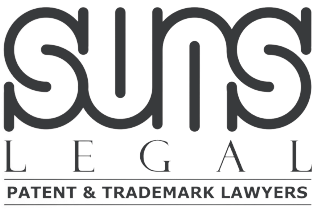For more intellectual property updates, follow our WHATSAPP CHANNEL and SUNS LEGAL | LinkedIn
Written by Maria Therese Syriac, a student of NUALS and verified by Sunil Jose, Managing Attorney, Suns Legal.
“I’m sorry Dave, I can’t do that” a HAL 9000’s famous line from “2001: A Space Odyssey” might soon be joined by a new AI refrain, “I’m sorry developers, I can’t train on that copyrighted data.” In a significant ruling that could reshape how AI systems are built, Judge Stephanos Bibas of the U.S. District Court for the District of Delaware has granted partial summary judgment to Thomson Reuters in its copyright infringement lawsuit against ROSS Intelligence.
This landmark decision of Thompson Reuters v. Ross Intelligence (1:20-CV-613-SB (D. Del) strikes at the heart of how AI companies acquire and utilize training data, potentially forcing a dramatic rethink of development practices throughout the industry. As AI technologies rapidly advance and become more integrated into various sectors, the legal frameworks governing their creation are increasingly being tested in courtrooms across the country. The Bibas ruling represents one of the most consequential judicial interpretations to date of how traditional copyright principles apply to artificial intelligence development.
The Case
Thomson Reuters, owner of the legal research platform Westlaw, sued ROSS Intelligence in 2020 after discovering that ROSS had used Westlaw’s headnotes to train its competing AI-powered legal research tool. These headnotes, concise summaries of key points of law created by Thomson Reuters editors, were allegedly incorporated into training data without permission.
According to court documents, ROSS initially sought to license Westlaw’s content but was refused because ROSS was developing a competing product. Undeterred, ROSS partnered with LegalEase, which provided approximately 25,000 “Bulk Memos” containing legal questions and answers derived from Westlaw’s headnotes. ROSS used these materials to train its AI search system.
In a remarkable demonstration of judicial humility, Judge Bibas revised his own 2023 summary judgment opinion. “A smart man knows when he is right; a wise man knows when he is wrong. Wisdom does not always find me, so I try to embrace it when it does, even if it comes late, as it did here,” he wrote.
The judge explained that upon closer examination of the case materials, he realized his prior ruling “had not gone far enough” in addressing the copyright issues at stake.
Key Findings
The court’s analysis centered on two main questions. That is, whether ROSS directly infringed Thomson Reuters’s copyrights and whether such use qualified as fair use.
On the infringement question, Judge Bibas found that Westlaw’s headnotes possessed the “minimal degree of creativity” required for copyright protection. Making a comparison, he likened Thomson Reuters’s editorial process to a sculptor who creates art by “choosing what to cut away and what to leave in place.” Just as a sculpture carved from marble is copyrightable, so too are headnotes that carefully extract and articulate key points from lengthy judicial opinions.
After examining thousands of examples, the court found that ROSS had copied 2,243 headnotes. For these headnotes, the questions in the Bulk Memos more closely resembled the headnotes than the underlying judicial opinions, strongly suggesting that the headnotes, not the opinions themselves, were the source material.
Fair Use Defense Rejected
ROSS’s primary defense was fair use, arguing that its use of the headnotes constituted “intermediate copying” that resulted in a transformative product. However, Judge Bibas rejected this argument after analyzing the four statutory factors.
The ‘purpose and character of the use’ factor favored Thomson Reuters because ROSS’s use was commercial and not transformative. The judge distinguished this case from previous software cases involving intermediate copying, noting that those cases involved copying that was “necessary for competitors to innovate” in a way does not present here.
The Nature of the copyrighted work favored ROSS because headnotes, while original, have limited creativity compared to novels or artistic works. The amount used favored ROSS since its end product did not display the headnotes to users.
Most critically, the market effect factor, deemed “undoubtedly the single most important element of fair use”, strongly favored Thomson Reuters. ROSS created a direct market substitute for Westlaw’s services and potentially affected the emerging market for AI training data.
Weighing these factors together, the court concluded that ROSS’s use did not qualify as fair use.
Implications for AI Development
This ruling sends a clear warning signal to AI developers who might be tempted to use copyrighted materials without permission. It suggests that training AI systems with copyrighted materials can constitute infringement, even if the final product doesn’t directly display the copyrighted content. The “intermediate copying” defense that has protected software reverse-engineering may not extend to other types of content used for AI training. The commercial AI systems that compete with the original copyright holder face particular scrutiny under fair use analysis.
Notably, Judge Bibas specified that his ruling addresses only non-generative AI, “leaving open questions about how copyright law might apply to generative AI systems” like those powering tools such as ChatGPT or DALL-E.
Next Steps
While the court granted summary judgment on direct infringement for 2,243 headnotes, questions remain about which specific headnotes are still covered by valid copyrights. This factual issue will be determined at trial, along with matters related to contributory liability and damages.
As one of the first major judicial decisions addressing the increasingly important intersection of copyright law and artificial intelligence, this case may influence how AI developers approach training data acquisition in the future. Perhaps more importantly, it signals that courts are willing to apply traditional copyright principles to new AI contexts, even as technology races ahead of legal frameworks designed for an earlier era.

